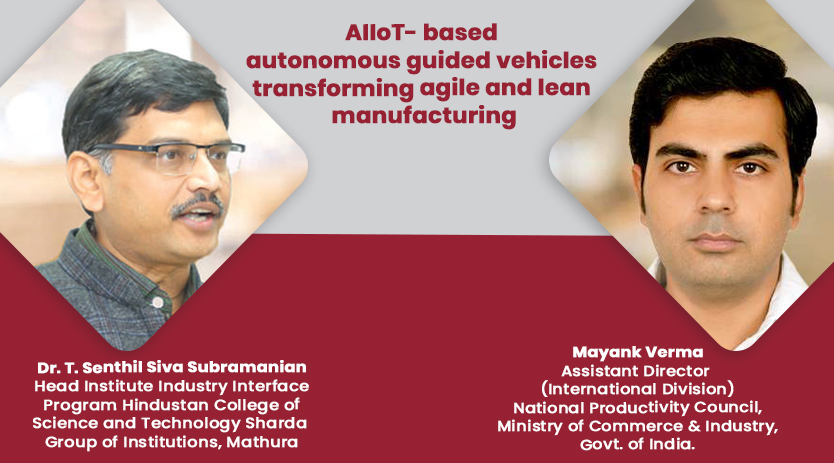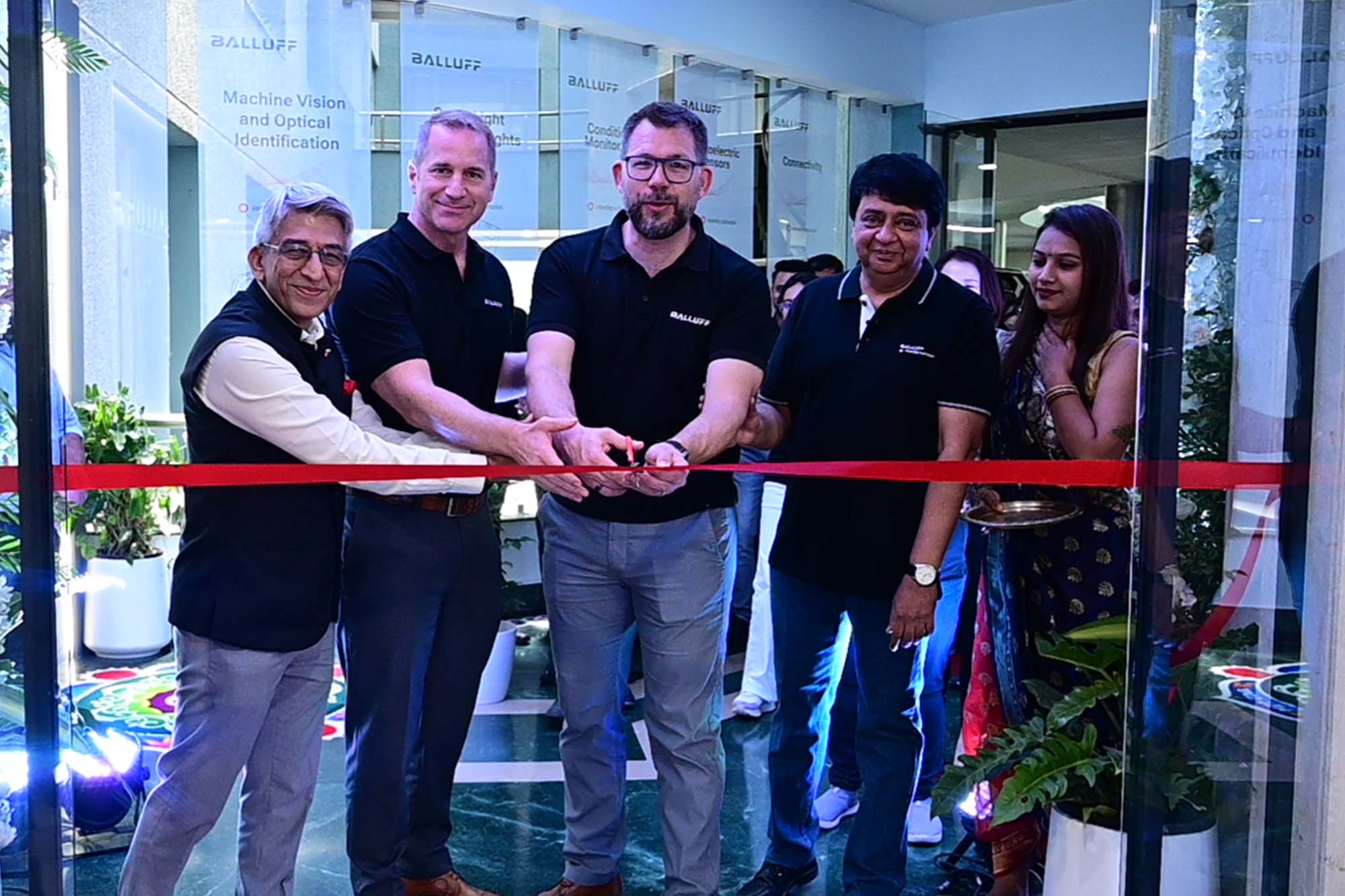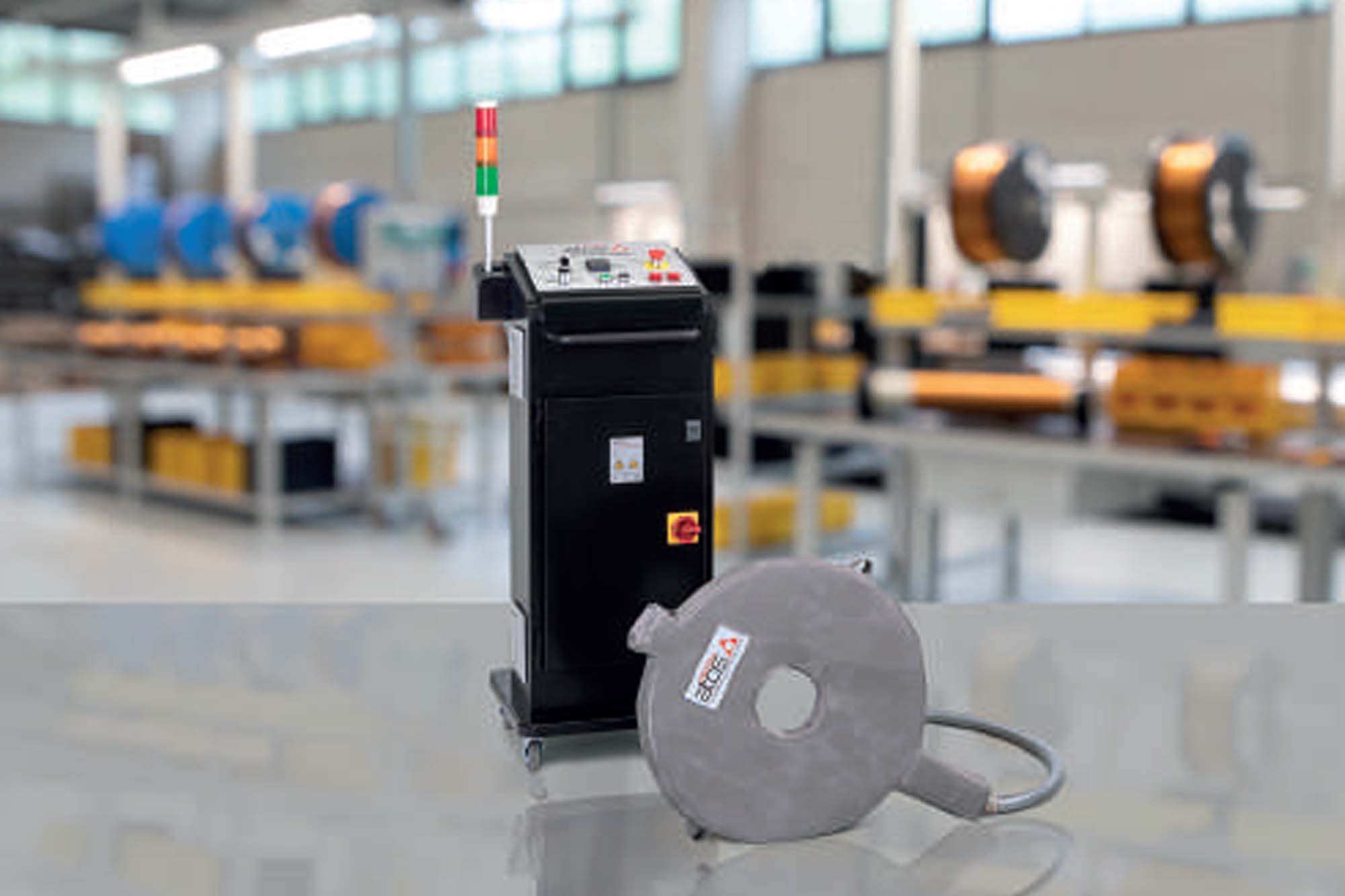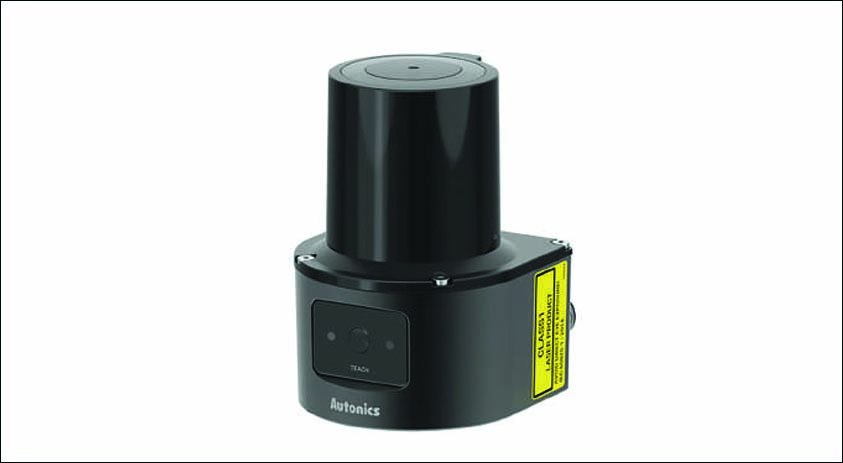AIIoT- based autonomous guided vehicles transforming agile and lean manufacturing
By OEM Update Editorial November 23, 2023 2:10 pm IST
Highlighting their joint perspectives, Dr. T. Senthil Siva Subramanian and Mayank Verma explain the increasing need for advanced technology in today’s industrial environment, particularly the convergence of artificial intelligence and the Internet of Things (AIIoT). This convergence has given rise to innovations such as AIIoT-AGVs and AIIoT-Autonomous Mobile Robots (AMRs), bringing about a transformation in intelligent operations and manufacturing procedures.
Technological advancements aimed at enhancing productivity and facilitating agile and efficient manufacturing have given rise to cost-effective innovations in automation.
Technology
Today’s industrial landscape is undergoing a rapid paradigm shift in manufacturing operations due to the digital evolution of smart technologies, particularly autonomous systems like guided vehicles. Automation is fundamentally altering the way we work by introducing intelligent operational processes. The industry is now in need of intelligent workflows that seamlessly integrate with smart production systems, ultimately simplifying and enhancing safety in the manufacturing process.
The incorporation of Internet technologies such as the Internet of Things (IoT) into manufacturing frameworks is leading to optimised automation systems. This, in turn, makes the manufacturing cycle more robust, seamless, and less reliant on human intervention and empowers systems to make autonomous decisions through artificial intelligence and machine learning. Integrating IoT with human-machine interfaces is paving the way to achieve less return on investment (ROI).
The industry needs specialised autonomous systems to tackle several pressing challenges. These challenges include optimising the flow of logistics and supply chain operations, enhancing safety within industrial facilities, minimizing labour-intensive tasks, intelligent resource utilisation, and reducing carbon footprints.
The industry is looking to incorporate disruptive technologies that utilise intelligent systems and internet-connected devices, specifically by merging artificial intelligence and the Internet of Things, often called AIIoT. The outcome of the technologies led to the development of AIIoT-based smart Autonomous Guided Vehicles named AIIoT-AGVs and AIIoT-Autonomous Mobile Robots (AMRs).
Smart operations
In today’s industrial landscape, there is a growing demand for intelligent forecasting and assessment-driven devices and technology. The concept of “Just in Time” simplifies intricate processes by optimising inventory levels for works in progress, parts, and other materials before they reach the assembly line on the shop floor. As a result, AIIoT-based AMRs harness the potential of machine learning and man-machine interfaces (IoTs) to locate and transport goods for loading and unloading efficiently. This is possible through intelligent algorithms like Simultaneous Localization and Mapping (SLAM), an AI-based navigation system that ensures safety and collision avoidance in the factory environment.
Devices and technologies such as AGVs and AMRs can be seamlessly integrated with Visual Positioning Systems (VPS) and laser positioning systems to facilitate smart manufacturing operations. Additionally, advancements in transformative technologies like 5G and ChatGPT by OpenAI can be leveraged to enhance the efficiency of AIIoT-enabled AGVs and AMRs. Radio Frequency Technologies like RFID play a crucial role in guiding and controlling the motion of AGVs.
AGVs and AMRs represent smart devices equipped with onboard semiconductor chips and access to OpenAI resources for effective path planning. Their ability to make intelligent decisions allows them to operate in dynamic manufacturing. These smart operations yield optimisation benefits across the 5 Ms—Man, Material, Machine, Money, and Methodology. Furthermore, AGVS and AMRs possess the capacity to reconfigure and adapt manufacturing processes through the integration of AI and IoT technologies.Intelligent reconfigurable manufacturing systems embody several essential characteristics that enhance functionality and adaptability. These characteristics include:
- Convertibility, enabling seamless reconfiguration to meet diverse production demands.
- Customizability, allowing for tailoring to specific requirements.
- Diagnosability, ensuring early detection and resolution of issues.
- Reducibility, minimising resource usage.
- Neutrality utilisation, promoting efficient resource management.
- Interconnectivity, facilitating smooth communication with other systems and devices, fostering a cohesive and integrated manufacturing environment.
In addition to the above, AIIoTs-enabled AGVs and AMRs can be centrally controlled via intelligent systems utilising various wireless technologies such as LoRaWAN and Light Fidelity (LiFi Technology). Moreover, they can also be virtually controlled through software tools to ensure safe movements within the factory environment. These technological capabilities not only enhance the qualitative aspects of manufacturing systems but also contribute to the optimisation of inventory management.
Case study on AGVs
The Bhabha Atomic Research Centre (BARC) has designed, developed and tested an Automated Guided Vehicle – based material transfer system for transporting manufactured goods within a factory setting. They have developed a cost-effective solution, which costs only 1/6th of what imported AGVs would typically cost. This system, created by BARC, was designed for implementation at the Bajaj Auto manufacturing facility.
Cookie Consent
We use cookies to personalize your experience. By continuing to visit this website you agree to our Terms & Conditions, Privacy Policy and Cookie Policy.
















